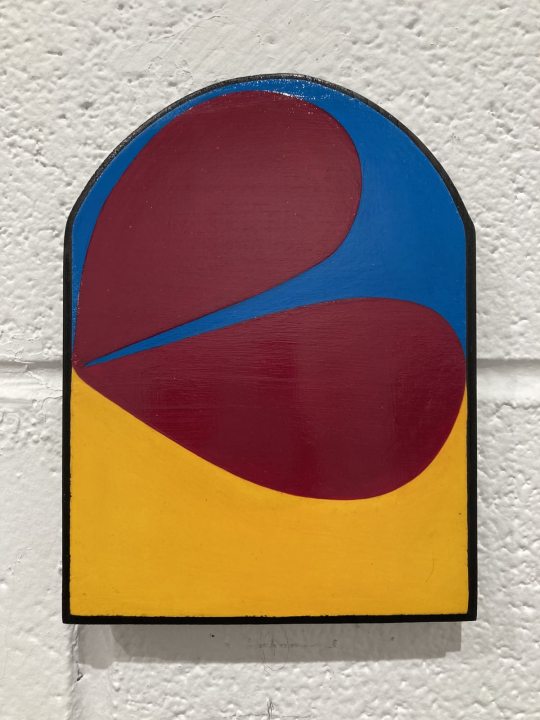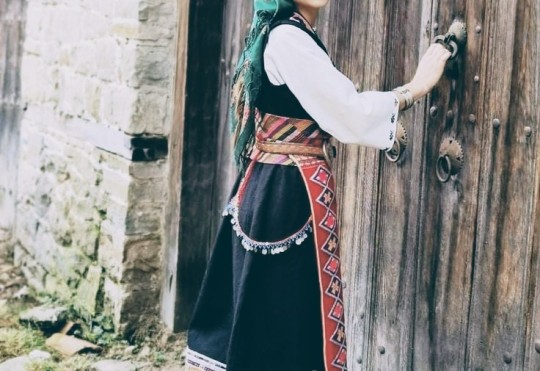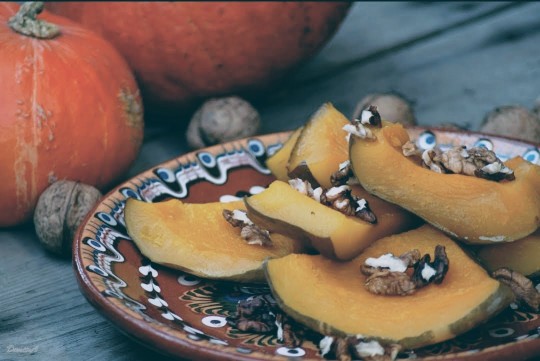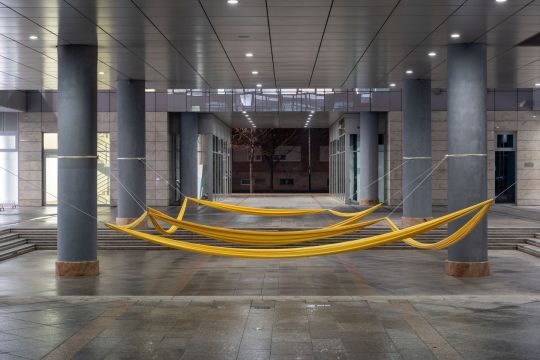#Kaloyan
Text

…o…, 2012 - by Kaloyan Bogdanov (1979), Bulgarian
97 notes
·
View notes
Text

Arch of Love #11, acrylic paint on board, 14cm x 18.5cm, 2018
#kaloyan ivanov#art#abstractpainting#contemporaryart#acrylicpainting#artwork#contemporarypainting#painting#abstract
22 notes
·
View notes
Text
Arco Vara: Arco Vara alustab Botanica Lozen Residences esimese etapi ehitust
Arco Vara: Arco Vara alustab Botanica Lozen Residences esimese etapi ehitust
Arco Vara AS-i tütarfirma Botanica Lozen EOOD on sõlminud ehituslepingu Strabag EAD-ga Botanica Lozen Residences elukondliku arendusprojekti esimese etapi teostamiseks. Ehitustöödega alustatakse novembrikuus.
Sofia linna lähistele Lozeni külla rajatakse esimese etapi raames 16 eramaja. Majad on kahe- või kolmekordsed – majades on 4-5 magamistuba, kontoriruum, kaks garaaži. Majade suurus on…

View On WordPress
#Arco Vara#arendus#arhitekt#arhitektuur#Bulgaaria#ehitus#Kaloyan Radosslavov#kaubandus#kaubanduskeskus#kontor#leping#töövõtja#tulu
0 notes
Photo

The Harvest by Kaloyan Boychev
1 note
·
View note
Text
i just remembered i watched nik on a podcast and didnt tell u guys about it.
he was with kaloyan (a karting driver he's known for years) and they were so funny together
my favourite part was
"are you and kaloyan single?"
"we didn't tell you in the beginning but we (him and kaloyan) have been together for a while"
then kaloyan laughs and nikola is being so serious
kaloyan brings the mic closer and says "he's joking. theres nothing wrong with it. we are not homophobic but we arent together"
and when i tell you nikola looks GAGGED.
man says "i thought we'd been together for years." then he scolds kaloyan and ends it by saying theyre friends with benefits and caressing his arm 😭
#i love them sm#val shaking her head at the screen rn#f1#formula 1#f3#formula 3#nikola tsolov#nt25#lance stroll#aston martin#fernando alonso#ls18#fa14#strollonso#yes i am tagging this strollonso bc he's their kid duh
68 notes
·
View notes
Text








October 26th is Dimìtrovden/Mitrovden (Димитровден), or the Orthodox feast day of St. Demetrius of Thessaloniki. (Bulgarian: Свети Димитър Солунски) He is a 3rd-4th century Christian saint and great martyr (великомъченик) from the city of Thessaloniki in Greece, of which he is the patron saint.
Hagiographies refer to St. Demetrius as a young man of a senatorial family, who became proconsul and was tasked with persecuting Christians in the at the time still pagan Roman Empire. However, being himself Christian, he instead protected them, for which the emperor had him jailed. He was later speared to death as punishment for the defeat of the gladiator Lyaeus at the hands of Demetrius' disciple, Nestor. This marked the beginning of his veneration by Christians in the area, which grew in the following centuries, as he was said to guard the city against raiders.
Albeit not one originally, during the Middle Ages St. Demetrius came to be revered as a warrior saint, and iconography portrays him riding on a red horse, running a spear through various enemies — often Lyaeus, but also whoever was locally perceived as an enemy. In Greek icons, this is sometimes the Bulgarian tsar Kaloyan, while in Bulgarian ones — the Byzantine emperor Basil II The Bulgarslayer, or later on, a Turk. St. Demetrius is also associated with the founding of the Second Bulgarian Tsardom, specifically the uprising of the brothers Petăr and Asen, which broke out on Oct. 26th, 1185. The St. Demetrius church in Veliko Tărnovo (pictured above) was built in commemoration the event, and served as a coronation site of Asen dynasty tsars, who claimed him as their patron.
Traditionally, Dimitrovden marks the end of the seasonal transition from fall to winter, a period which begins on Oct. 14th with Petkovden. Bulgarian folk mythology casts the saints George and Demetrius in the role of twin brothers, whose respective holidays split the year into its warm and cold halves. The latter, elder of the two, ushers in the cold and darkness, as he rides in on his red horse and the winter's first snowflakes sprinkle down onto the earth from his beard. As St. George's opposite and counterpart, he takes on the qualities of a chthonic deity, and thus has connotations to death and the Beyond — under his patronage the so-called Dimitrovska Zadushnica takes place on the Saturday prior to Dimitrovden, one of several such holidays where food is given out in honor of deceased ancestors. Perhaps this is also why, in addition to St. George, folk imagination places him as a brother to Archangel Michael and nephew to St. Paraskeva/Petka.
Dimitrovden is the true end to the year's agrarian cycle — the harvest now over, it's time to put the farm tools away, make sure the animals have shelter and firewood is stocked up. It's also when farmhands and other labourers' contracts expire and they get rehired for the year ahead, which is why the day is also known as Razpust (Разпуст). As with other big holidays, a community-wide celebratory feast is held, and the customary ritual meal (or kurban) is mutton. The biggest ram is chosen, a pair of gold-painted apples are placed onto its horns and those present bow before it, after which it's slaughtered and cooked, and receives a priest's blessing before being served. Festivities are accompanied by music and horo (group dancing), which again has an intended matchmaking function. Namesakes of the saint celebrate the occasion, too — but they're traditionally served a chicken or rooster dish, according to gender. Other foods for Dimitrovden include corn, seasonal fruit and derived dishes, such as apple pita, pestil (a type of plum dessert), rachel (pumpkin syrup), etc.
Another activity which traditionally ends on Dimitrovden is construction work — a new house is supposed to have been completed by then, and the homeowners celebrate by throwing their own feast with a kurban, and inviting friends and relatives to witness the house being blessed by the master mason and the priest. The feast day has therefore been adopted as a career holiday of builders and masons.
The day's connection to the mysterious and otherworldly has inspired various beliefs and rituals of prognostic or divinatory nature, and anything from the weather and moon phases, to the behaviour of farm animals is observed carefully and used to make future predictions. Characteristic is the custom, known as polazvane (полазване), wherein members of the household make note of the first person to visit them, to physically cross the threshold into their home, and interpret them as a portent of things to come. Also, according to old treasure hunting legends, Dimitrovden is when "the sky opens" and buried gold emits a blue-ish flame just above ground.
Dimitrovden is part of the group of holidays, based around the idea of transition and liminality; between fall and winter, between the world of the living and of the dead. The Christian and pre-Christian symbolism intertwine, the martyr death of the saint mirrors the "death" of nature as the earth is covered in snow and daytime engulfed by darkness. And crucially — for a people whose perception of time follows nature's cycles — the coming of winter brings not only a period of calm and rest, but the promise of spring and renewal.
#Bulgaria#Slavic#Balkan#Eastern Europe#Orthodox#folklore#mythology#customs#Dimitrovden#here you go bulgarian halloween pt.2#I am again sorry it's several days later but it took a while to write ok
2K notes
·
View notes
Text

Kaloyan Matev - The Armoured Forces of the Bulgarian Army 1936-45.
#ww2#eastern front#bulgaria#wwii#second world war#world war 2#world war ii#war history#world war two#photography#armor#1940s#wwii era#ww2 era#world war#tumbler#war#menswear#soldiers#eastern europe#history
26 notes
·
View notes
Text

Icon depicting St. Demetrius of Thessaloniki slaying tsar Kaloyan of Bulgaria and St. George slaying the dragon
19th century, Russia
via Ruzhnikov
158 notes
·
View notes
Note
Hi!!! I'm fairly new here so I'm not sure if this has been discussed but I'd love to see your take on the relationship between BulRo during Bul's empires. Do you have headcanons for it?
anon I'm SO SORRY for this being late, life's been crazy lately
I do, I do! I haven't discussed it before though. But here is a short list, trying to potentially stave off spoilers for Rose-Hearted.
Please take in consideration that I am not a historian and my headcannons should be taken as what they are: Mere headcannons, not actual commentary on medieval history and entity dynamics.
[Also bear in mind that in my verse Romania is a woman. It's my nationverse and I get to pick my women]
● In the First Bulgarian Empire, Dimitar didn't interact a lot with Antonia [Romania]. Romanians weren't mentioned a lot in the First Empire, and there's little information available on the inter-relations of Bulgarians and Romanians. I imagine that Antonia, unhappy with her situation, would draw herself away and do her own things.
•I think that Dimitar would try to approach her though! Get to know her a bit better. He'd often bring her little gifts that he made himself — flowers from his garden, woodcarvings of small animals (My headcannon is that Dimitar enjoys wood-carving) she likes. Antonia is always polite with him, but isn't exactly sure if she trusts Dimitar fully.
•As Dimitar becomes stronger and more confident in his abilities, he also becomes more confident in communicating with others and isn't as shy or timid with Antonia. He has accepted that Antonia has her doubts of him, but he'd try to befriend her regardless.
•Unintentionally, he rubs off on her and she grows more confident as time passes. She discovers her own passions and hobbies — she develops an interest in the occult, magic and folklore, which leads her into hours of research.
•Dimitar bonds with Antonia over a shared interest in folklore; he tells her stories of the Bulgars and Slavs, and she records them. Antonia, in return, tells stories of her mother, Dacia's accomplishments and adventures, as well as Roman mythology.
•In the end, during the First Empire they don't exactly interact a lot, but when they do, they're amicable. Antonia bonds with Dimitar overtime, but still keeps a fair amount of distance.
•When the First Bulgarian Empire was conquered by the Byzantine Empire and turned into a Theme (essentially a province), Dimitar, as the representative, was captured and taken to the Byzantine court. Antonia, having fallen under the Byzantine sphere of influence, stayed behind, but had to stay subservient to the Empire, as many other nations. During that time, she continued her research on folklore while also sending letters to Dimitar, detailing her daily life and expressing disdain for "that arrogant man-child with the purple cloak".
>It was also at that time where Antonia and Miroslav (Serbia) actually befriended each other, due to being at similar situations.
•Like I said, she'd send Dimitar letters. LOTS of them. She'd also include drawings she made, of various things: Mostly scenery, but also portraits. She found herself missing Dimitar.
•The Second Bulgarian Empire was marked by more interactions between Bulgarians and Romanians (known as Wallachians or Vlachs then). Indeed, the revolution against the Byzantine Empire that resulted in the creation of the SBE was started by three Romanians (Asan, Kaloyan and Peter).
•After Dimitar returned from captivity, he and Antonia grew closer. Antonia became more assertive when it involved political matters and she often advised Dimitar. The SBE soon became the dominant entity in the Balkans, defeating the Romans multiple times.
•It was then that Antonia realized she had feelings for Dimitar, but soon pushed them away in order to focus on her own life. Mainly, getting her own state and no longer relying on anyone else for her people's existence and well-being.
•The Mongol Invasions ended Cuman influence and weakened Hungary, which gave Antonia an opportunity to call for unification and the creation of an independent state. Even when she left Dimitar's side, she never stopped sending him letters offering advice and generally talking.
•Dimitar kept all her letters. Even through Ottoman times, when he tended to his garden, he'd keep the most beautiful flowers and name them after her. Yes I headcannon him as sappy, crucify me.
#historical hetalia#hws bulgaria#hws romania#hetalia#balkantalia#hetalia headcanons#also bi4bi bulro canon
12 notes
·
View notes
Text

tsar Kaloyan of Bulgaria!!
4 notes
·
View notes
Text

Moon on the Sea at the 28th Slavonian Biennial "New Paradigms of Happiness, from Osijek Dada to Contemporary Chaos" curated by Valentina Radoš
Photo: Tomislav Herega
#art#installation#participatory installation#yellow#kaloyan ivanov#osijek#croatia#28th slavonian biennial
15 notes
·
View notes
Text

hello i’m melody! kaloyan told me to get tumblr, so here i am (๑´ڡ`๑)

(this is me)

info about me:
i go by any pronouns
i like listening to metal!
my best friends are pastry and kaloyan (i’m the third wheel)
i don’t know what else to put, i like emoticons!
i can shape shift only some parts of my body, shape shifting all of my body is uncomfortable :(
people know me as the hero of miitopia, i don’t like being called this though- i’m just plain melody!
i’m 24 years old!

info about the owner of this account:
hi i’m puff :3 i run this blog!
my main is @craftykittyscientist
i will end my messages off with “-💉” when i’m talking out of character!

rules:
1. no NSFW, the person running this account is a minor!
2. no racism, lgbtqia+phobia, sexism, ableism, etc.
3. proshippers and comshippers DO NOT INTERACT!
4. have fun asking! :D

(divider is made by cafekitsune on tumblr!)

#miitopia#oc#oc rp#oc rp blog#rp#roleplay#rp blog#roleplay blog#oc roleplay#oc roleplay blog#mii#miiblr
5 notes
·
View notes
Text
Whumpmas in July #29

Do you identify with any particular roles or situations in whump?
here's the post i made for the same question last year! to sum it up: caretaker all the way. i usually don't imagine myself in whump scenarios, but whenever i do, it's in the caretaker role.
in that post, i talked about "caretaker instinct" and listed a bunch of whumpees i feel particularly caretakery about. here are some more whumpees who fit that bill!
Aziphem from Necrotrophic Soul by @demondamage
Jay from Eden by @dismemberment-on-a-tuesday-night
Kaloyan from Fearless by @quietly-by-myself
Valen from Magnanimous Moonrise & Savage Sunset by @not-a-space-alien
Vincent from Things End | People Change by @whumpcloud
literally every whumpee from every series clicker has put out this year from everything by @clickerflight
@whumpmasinjuly
14 notes
·
View notes
Text
#Say their Names #Hanau #19. Februar
Gökhan Gültekin
Sedat Gürbüz
Said Nesar Hashemi
Mercedes Kierpacz
Hamza Kurtović
Vili Viorel Păun
Fatih Saraçoğlu
Ferhat Unvar
Kaloyan Velkov
Link zur Initiative: Initiative 19. Februar
#Hanau#19. Februar 2019#Say their Names#Terroranschlag von Hanau#Rechtsterrorismus#Nazi Terror#FCK NZS#FCK FSCSM#FCK AFD
3 notes
·
View notes

